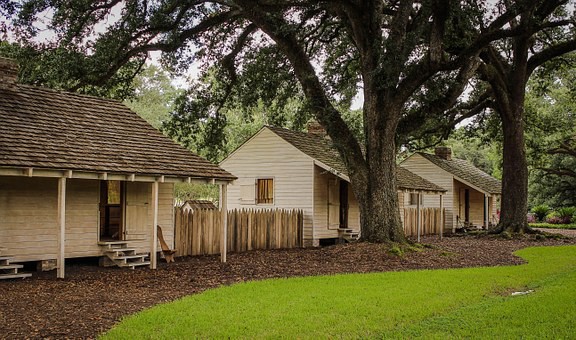
Excerpted from Birthing a Slave: Motherhood and Medicine in the Antebellum South by Marie Jenkins Schwartz. Published by Harvard University Press.
?By the 1820s planters and would-be planters were moving in large numbers to places previously unavailable for settlement and growing the fiber for sale in Europe and New England, where a textile industry was beginning to thrive. The extension of the so-called Cotton Kingdom required new laborers. As of 1808, when Congress ended the nation?s participation in the international slave trade, planters could no longer import additional slaves from Africa or the West Indies; the only practical way of increasing the number of slave laborers was through new births. With so much at stake, black women?s reproductive role became politically, as well as economically, decisive. If enslaved mothers did not bear sufficient numbers of children to take the place of aged and dying workers, the South could not continue as a slave society.?
In this book and many other sources, it?s made to appear that America had little choice but to increase slave production to offset the altruistic end of the International Slave Trade which Congress Banned in 1808. Thomas Jefferson was President at the time, he had no problem with slavery. He literally loved his slaves, failing to free even Sally Hemmings children, all six of them believed to be his according to DNA evidence, until after his death. Jefferson was a Virginia farmer, knowing full well the value of slavery to the Southern economy. Congress at that time was controlled by the Party he created; the Democratic-Republican Party (not to be confused with either the Democrats or Republicans of today). They didn?t end the International Slave Trade to harm slavery, but to preserve it, domestic slavery, in particular. Congress wanted to decrease the external supply to keep prices up for the homebred slaves.
It?s worth noting that the Constitution of the United States, in addition to establishing the Electoral College to protect slave states, and valuing slaves at three-fifths of a person (while giving them no rights). Specifically, forbid banning the importation of slavery prior to 1808.
? The Migration or Importation of such Persons as any of the States now existing shall think proper to admit, shall not be prohibited by the Congress prior to the Year one thousand eight hundred and eight, but a Tax or duty may be imposed on such Importation, not exceeding ten dollars for each Person.?
Article 1: Section 9 Constitution of the United States
Americans did not take up breeding slaves in response to Congressional action, that action was taken at the behest of slave breeders as a protectionist means to keep the price of their product up. Jefferson?s home state Virginia was the leading producer of slaves. Slavery eventually exceeded tobacco as their leading export. Maryland was second in slave production, followed by several other states.
Economist Richard Sutch did a study which found that in 1860, on farms that had at least one female slave the ratio of women to men was 2:1. In Virginia, female slaves exceeded males by over 300,000. They were used to breed. Robert Lumpkin ran what is mostly referred to as a ?slave jail? with little recognition that he ran the nations largest breeding farm. He personally had five children with a slave Mary who he ultimately remembered in his will. While owners of the breeding farms and plantations in general fornicated at will with their property, they also utilized selective breeding. Maintaining their own large ?bucks? and importing large male slaves for the purpose of breeding good workers for the fields.
Black female slaves were some of the first people in the country to receive free health care. Breeders took a great interest in fertility and expected multiple births from the women or their value would be diminished. Home medical journals were produced to help with difficult births that had previously been left to the slaves to deal with. The quote from the film Gone With The Wind, ?I don?t know nothin? about birthing babies,? was meant to be a thing of the past.
Many films have depicted boats arriving in New Orleans which became the largest slave market in the Antebellum South. Rarely is it shown those ships originated in Richmond and Baltimore. Slaves were also shipped by railroad packed in boxcars or sent by stagecoach. The slave breeding farms are mostly left out of the history books except those that deny their existence.
Many of the white slave owners felt they were doing their female slaves a favor when they mated with them. Granting them a respite from the brutish black slaves they would otherwise be subjected to. Generally speaking, it was the house slaves that got raped the most. Some mothers had to protect their offspring from the master?s wife if she had reason to believe her spouse was the father. We?re generally aware of that situation which we?ve been led to believe was the worst case scenario. Nobody talks about the 13-year-old girl on a breeding farm, forced to bear as many children as possible, only to have them ripped away and send down South to endure a lifetime of hardship, without a mother. On one breeding farm, the mother would be freed after birthing fifteen children. What would she have to look forward to?
America barely acknowledges that breeding farms existed, let alone document their role in creating the robust economy of the early South. There are the self-evident truths mentioned in the Declaration of Independence, and those truths so heinous they must perpetually be covered up and denied. Breeding farms fall into the second category. History books when they even mention it, suggest slave breeding didn?t begin until after the banning of the Atlantic slave trade. In truth, it began decades earlier on plantations and farms and only because America was prepared to produce the slaves it needed did it allow the end of the importation of slaves from Africa.


